BUPRENORPHINE/NALOXONE FILM - SUBLINGUAL
PHONETIC PRONUNCIATION: (BUE-pre-NOR-feen/nal-OX-one)
COMMON BRAND NAME(S): Suboxone
GENERIC NAME(S): buprenorphine HCl/naloxone HCl
Uses
USES: This medication contains 2 medicines: buprenorphine and naloxone. It is used to treat opioid (narcotic) dependence/addiction. Buprenorphine belongs to a class of drugs called mixed opioid agonist-antagonists. Buprenorphine helps prevent withdrawal symptoms caused by stopping other opioids. Naloxone is a narcotic antagonist that blocks the effect of opioids and can cause severe opioid withdrawal when injected. Withdrawal is less likely when naloxone is taken by mouth, dissolved under the tongue, or dissolved on the inside of the cheek. It is combined with buprenorphine to prevent abuse and misuse (injection) of this medication. This combination medication is used as part of a complete treatment program for drug abuse (such as compliance monitoring, counseling, behavioral contract, lifestyle changes).
How to use BUPRENORPHINE/NALOXONE FILM - SUBLINGUAL
HOW TO USE: Read the Medication Guide provided by your pharmacist before you start using this medication and each time you get a refill. This medication can either be dissolved under the tongue or dissolved on the inside of the cheek. Follow your doctor's directions. Learn how to correctly use this medication. If you have any questions, ask your doctor or pharmacist. Use this medication as directed by your doctor, usually once daily. Drink some water to moisten your mouth before use. This helps the film dissolve. With dry hands, open the foil packet just before use and place the medication film under your tongue or inside your cheek. Keep the film in place until it completely dissolves. Do not talk, swallow, chew, or move the film after placing it under your tongue or on the inside of your cheek, or it will not work as well. If you are prescribed more than one film each day, place the second film under your tongue on the opposite side of the mouth or on the inside of the other cheek. Try not to have the films touch each other. If your doctor has prescribed a third film, place it under your tongue or on the inside of either cheek after the first 2 films have completely dissolved. Buprenorphine alone may be used instead of this medication for the first 2 days after you have stopped all other opioids. It is usually given in your doctor's office. Your doctor will then switch you to this combination buprenorphine/naloxone medication for maintenance treatment. The dosage is based on your medical condition and response to treatment. Your doctor will adjust the dose until there are no symptoms of withdrawal. Do not switch between sublingual tablets and film, because you may need a different dose if you switch. Do not increase your dose or use this drug more often or for longer than prescribed. Properly stop the medication when directed. Use this medication regularly to get the most benefit from it. To help you remember, use it at the same time each day. This medication may cause withdrawal reactions, especially if it has been used regularly for a long time or in high doses. In such cases, withdrawal symptoms (such as diarrhea, restlessness, watering eyes, runny nose, nausea, sweating, muscle aches) may occur if you suddenly stop using this medication. To prevent withdrawal reactions, your doctor may reduce your dose gradually. Consult your doctor or pharmacist for more details, and report any withdrawal reactions right away. Do not inject ("shoot up") buprenorphine/naloxone. Injecting it is dangerous, and will likely cause severe withdrawal symptoms due to the naloxone in this medication, especially if you have been using opioids such as heroin, morphine or methadone. Keep this medicine in a safe place to prevent theft, misuse, or abuse. If a child accidentally swallows this drug, get medical help right away.
Side Effects
Precautions
Interactions
Overdose
Images
Reviews
Faq for BUPRENORPHINE/NALOXONE FILM - SUBLINGUAL
Buprenorphine/Naloxone Film - Sublingual is a medication that combines two active ingredients, buprenorphine and naloxone. It is used in the treatment of opioid dependence.
Buprenorphine/Naloxone Film - Sublingual works by binding to the opioid receptors in the brain, reducing cravings and withdrawal symptoms associated with opioid dependence. The addition of naloxone helps prevent misuse as it can induce withdrawal symptoms if the film is dissolved and injected.
Buprenorphine/Naloxone Film - Sublingual is placed under the tongue and allowed to dissolve completely. It should not be chewed, swallowed, or cut into smaller pieces.
Common side effects may include headaches, nausea, constipation, sweating, insomnia, and dizziness. These side effects usually go away on their own but if they persist or worsen, it is important to inform your doctor.
Buprenorphine/Naloxone Film - Sublingual has a half-life of around 24-60 hours, meaning it takes that amount of time for half the dose to be eliminated from the body. However, it may take longer for the medication to completely leave your system.
While overdose is rare with Buprenorphine/Naloxone Film - Sublingual when used as prescribed, it is still possible to overdose, especially when combined with other drugs or alcohol. It is important to take the medication exactly as directed by your doctor to reduce the risk of overdose.
Buprenorphine/Naloxone Film - Sublingual is generally considered safe to use during pregnancy under medical supervision. However, it is important to discuss the risks and benefits with your healthcare provider before starting or continuing this medication.
Buprenorphine/Naloxone Film - Sublingual usually starts working within 1-2 hours after administration. However, individual response may vary.
Buprenorphine/Naloxone Film - Sublingual is a medication used to treat opioid dependence and can be habit-forming. However, when used as prescribed and under medical supervision, the risk of addiction is significantly reduced compared to illicit opioids.
Disclaimer
IMPORTANT: HOW TO USE THIS INFORMATION: This is a summary and does NOT have all possible information about this product. This information does not assure that this product is safe, effective, or appropriate for you. This information is not individual medical advice and does not substitute for the advice of your health care professional. Always ask your health care professional for complete information about this product and your specific health needs.
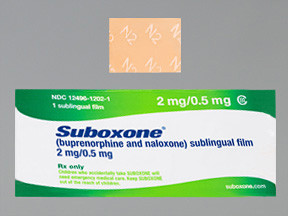
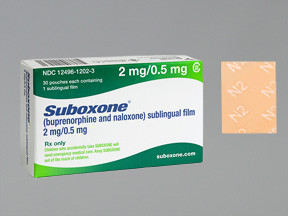
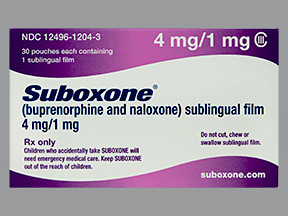
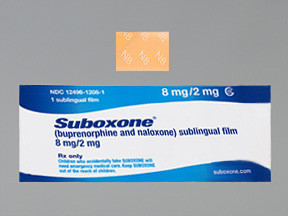
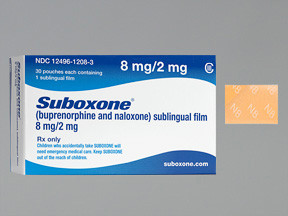
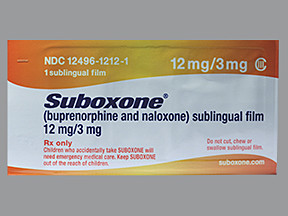
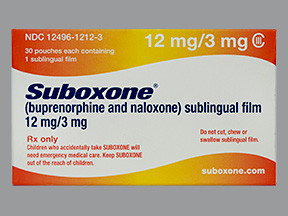

No Reviews Yet